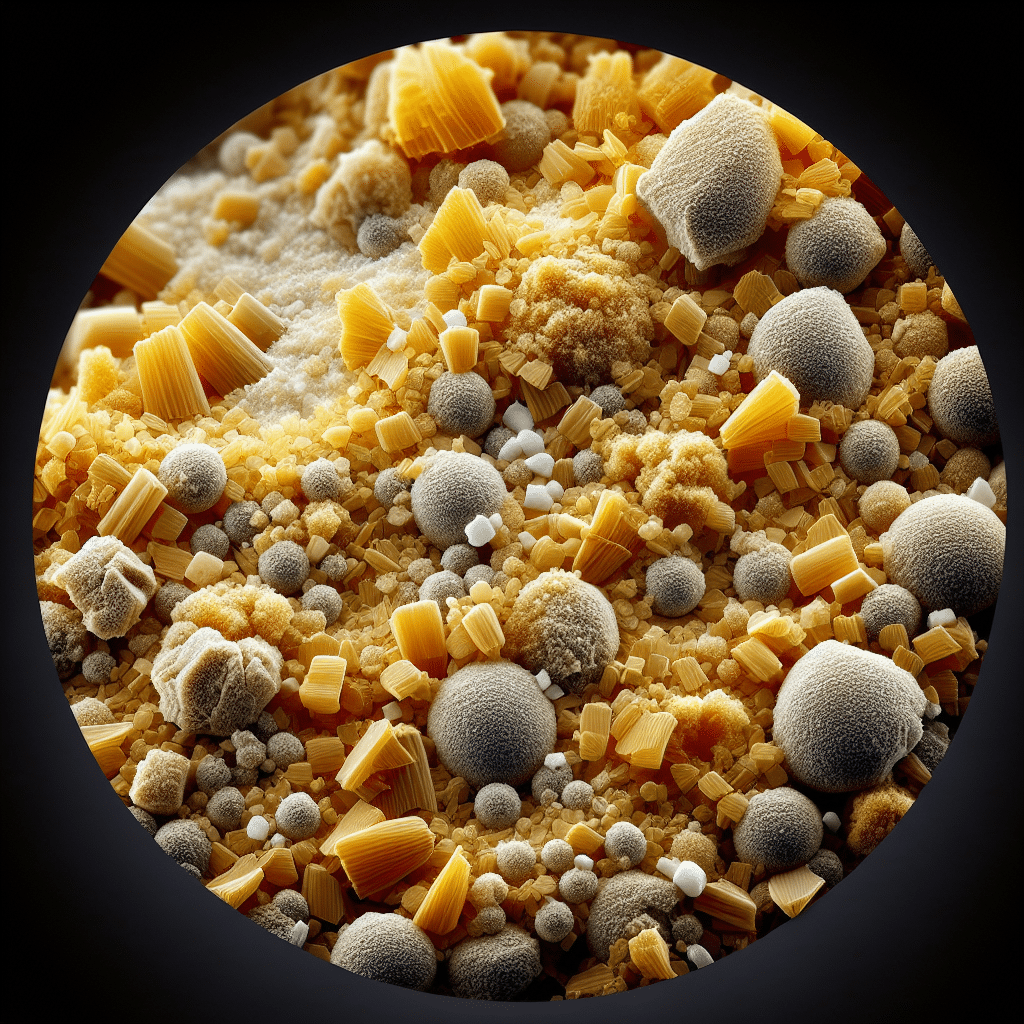What is in semolina flour? Semolina flour is a coarsely ground grain derived from durum wheat, which is known for its high protein and gluten content. It is typically yellow in color and has a slightly gritty texture, making it ideal for various culinary applications. Semolina is primarily composed of complex carbohydrates, providing a substantial energy source, alongside essential nutrients like fiber, vitamins B1 (thiamine) and B2 (riboflavin), iron, zinc, and magnesium. This unique composition not only enhances the flavor and texture of dishes but also contributes to their nutritional value.
Understanding Semolina Flour
1. What is Semolina Flour?
Semolina flour, a product of durum wheat (Triticum durum), is coarsely milled, resulting in a texture that is somewhat between finely ground flour and grits. This flour is predominantly used in making pasta, bread, and a variety of traditional dishes, especially across Mediterranean and Middle Eastern cuisines. Unlike all-purpose flour, semolina is specifically known for its strength and ability to retain shape, which is essential for pasta-making.
2. Nutritional Profile of Semolina Flour
When exploring what is in semolina flour, the nutritional profile is illuminating:
- Calories: A one-cup serving (about 200 grams) of dry semolina provides around 640 calories.
- Carbohydrates: It contains approximately 136 grams of carbs, predominantly in the form of complex carbohydrates, which are digested slowly, offering sustained energy.
- Protein: Semolina is rich in protein, with about 24 grams per serving, making it a good option for those seeking plant-based protein sources.
- Fat: It has a low-fat content, usually around 2 grams, mainly unsaturated fats.
- Fiber: With roughly 8 grams of dietary fiber per serving, semolina can aid digestion and contribute to satiety.
- Vitamins and Minerals: Semolina is fortified with essential vitamins and minerals such as B vitamins (thiamine and riboflavin), iron, magnesium, and zinc.
3. Culinary Uses
Semolina flour’s unique characteristics lend themselves to various culinary applications:
- Pasta: The high gluten content in semolina flour makes it ideal for creating pasta, giving it a firm texture and allowing it to hold sauce effectively.
- Bread: Used in baking artisan breads and baking blends, semolina flour enhances flavor while improving crustiness.
- Breakfast Dishes: Commonly prepared as semolina porridge, it can be enriched with fruits and nuts.
- Dumplings & Desserts: Semolina is also employed in dishes like gnocchi and desserts such as semolina cake or halva.
4. Health Benefits
Incorporating semolina flour into your diet can offer various health benefits:
- Heart Health: The fiber content aids in lowering cholesterol levels, promoting cardiovascular health.
- Weight Management: High protein and fiber levels can enhance satiety, making it easier to control weight.
- Digestive Health: Dietary fiber plays a significant role in gastrointestinal health.
Processing and Varieties
1. How is Semolina Flour Made?
The production of semolina flour involves several key steps:
- Harvesting: Durable durum wheat is harvested and dried.
- Milling: The wheat is milled, producing semolina and finely ground flour.
- Grade Selection: Various grades of semolina are produced, from coarse to fine, depending on the intended use.
2. Types of Semolina Flour
There are primarily two types of semolina flour:
- Semolina (Durum): The standard semolina produced from durum wheat.
- Soft Semolina: A finer variety, often used for different culinary purposes such as pastries and desserts.
Do’s and Don’ts with Semolina Flour
1. Cooking Techniques
To effectively use semolina flour, consider these tips:
- Do: Combine semolina with other flours for various textures.
- Don’t: Overwork the dough as it can become tough due to its high gluten content.
FAQs about Semolina Flour
1. What is the difference between semolina and regular flour?
Semolina flour is made from durum wheat, known for its high protein and gluten levels, making it ideal for pasta, while regular flour, often made from soft wheat, is used for bread and pastries.
2. Is semolina flour gluten-free?
No, semolina flour contains gluten and is not suitable for individuals with celiac disease or gluten sensitivity.
3. Can semolina flour be substituted for all-purpose flour?
While you can substitute semolina flour for all-purpose flour, adjustments will be necessary due to differences in texture and gluten content; it works best in pasta or bread recipes.
4. How should semolina flour be stored?
To maintain its freshness, semolina flour should be stored in an airtight container in a cool, dry place or refrigerated for extended shelf life.
Conclusion
In summary, semolina flour is a versatile ingredient recognized for its nutritional benefits, culinary applications, and unique properties derived from durum wheat. Understanding what is in semolina flour allows you to enhance various dishes, whether making traditional pastas or nutritious porridge. By incorporating semolina into your kitchen, you elevate not only the taste but also the health profile of your meals. With its numerous applications and benefits, semolina flour deserves a prominent place in your pantry.



